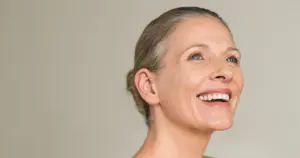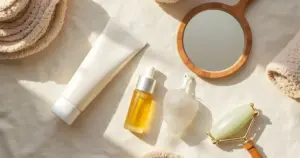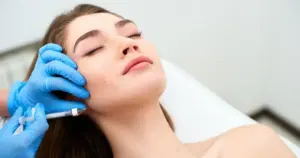Table of Contents
Choosing between Botox and Dysport isn’t just about brands. Both offer cosmetic and therapeutic results, but their differences can affect your experience, results, and preferences.
If you’re considering neurotoxin injections for cosmetic refinement or medical relief, knowing how they compare matters. This blog offers a comprehensive look at Botox vs Dysport to help you make an informed choice.
What Are Neurotoxins?
Neurotoxins are substances that affect the way nerves communicate with muscles. In aesthetic medicine, they are used in controlled, purified forms. The goal is to temporarily block the signals that cause muscle contractions.
When injected into targeted areas, these neurotoxins help reduce movement in specific facial muscles. Their primary mechanism of action involves softening the appearance of wrinkles that form from repeated expressions.
How Botox and Dysport Work
Botox and Dysport are injectable neuromodulators derived from botulinum toxin type A. They temporarily block nerve signals to specific muscles, reducing their activity. This decrease in muscle movement smooths out dynamic wrinkles and prevents new ones from forming.
FDA Approval and Usage
- Botox was approved by the FDA for cosmetic use in 2002. It has since gained widespread acceptance for treating various cosmetic issues. These may include Botox for wrinkles, Botox for hyperhidrosis, and even migraines.
- Dysport was approved by the FDA in 2009, specializing in aesthetic applications such as Dysport for frown lines, Dysport for forehead lines, and Dysport for neck wrinkles.
Both are considered safe and effective when administered by qualified professionals.
Comparing Botox vs Dysport: Key Differences
Molecular Structure and Spread
The structural makeup of Botox and Dysport affects how each behaves once injected.
Botox has a slightly larger molecular structure, meaning it tends to stay localized at the injection site. This makes it especially useful for small, focused areas where precision is important. This property is effective in addressing crow’s feet or glabellar lines.
Dysport, in contrast, has smaller protein molecules. These allow the product to diffuse more easily across a wider area of muscle. That characteristic makes Dysport for forehead lines or Dysport for neck wrinkles a practical option. The reason for this is that it can cover more regions with fewer injection points.
For patients needing broader coverage, Dysport may offer efficiency. For those seeking refined corrections in high-movement areas, Botox is often preferred for its tighter spread.
Onset of Results
How quickly results appear can be a deciding factor, especially if you’re planning around an event.
Dysport tends to take effect faster, often producing noticeable improvements within 2 to 3 days. This is especially useful if you’re addressing expression lines like frown lines and want a quick visual softening.
Botox, while still relatively fast-acting, usually starts to show visible results within 3 to 5 days. Peak results could appear at around 7 to 10 days. It offers a steady, controlled onset, which some patients prefer for a more gradual change.
If speed is your top priority, Dysport may have the advantage. However, both options deliver their full results within two weeks of treatment.
Duration
Both Botox and Dysport offer temporary effects that fade over time, requiring maintenance treatments every few months.
On average, results last between 3 to 4 months for both products. However, some patients experience slightly different durations according to their metabolism, lifestyle, and the strength of the muscles being treated.
A patient using Botox for hyperhidrosis might find results lasting longer due to the nature of the sweat gland treatment. Meanwhile, someone using Dysport for neck wrinkles might need follow-up injections closer to the three-month mark.
While neither option is permanent, both offer consistency with repeated treatments, and many patients report longer-lasting effects with continued use.
Dosage Units
Botox and Dysport are measured differently, which can be confusing if you’re comparing numbers alone.
In general, it takes more Dysport units to equal the same effect as a smaller number of Botox units. For instance, treating frown lines might require 20 units of Botox versus 50 to 60 units of Dysport. However, that doesn’t make Dysport weaker. It only means that the unit scale is different.
Practitioners account for this in their dosing, so patients receive the appropriate volume regardless of the brand chosen. If you’re deciding between Botox and Dysport, your provider will explain the unit differences so your expectations align with the dosage.
Cost Considerations
Cost is often another deciding factor, but it’s essential to look beyond just the per-unit price.
Dysport typically has a lower cost per unit. However, because it often requires more units than Botox for equivalent results, the overall price may be similar in the end. What matters more is the efficiency of the product for your specific needs, not just the unit price.
In places offering both Dysport vs Botox, such as Mount Pleasant, SC, your provider may recommend one over the other based on the treatment area and desired outcome—not necessarily cost.
For example, if your goal is to treat a broad surface like forehead lines, Dysport might offer better value. Suppose you aim for precision treatment like lip lines or crow’s feet, Botox injections may provide better control.
Cosmetic Applications: Choosing the Right Option
Botox for Wrinkles
Botox injections are highly effective for softening dynamic wrinkles caused by repeated facial movements. These include:
- Horizontal lines across the forehead
- Vertical frown lines between the brows (glabellar lines)
- Fine lines around the eyes (commonly known as crow’s feet)
What makes Botox for wrinkles stand out is its precision. The product tends to remain localized, allowing your injector to fine-tune specific facial areas without unwanted spread. This is especially beneficial when working near sensitive muscles that control brow elevation or eye shape.
Dysport for Larger Zones
If your primary concern involves broader areas of the face or neck, Dysport may be more efficient.
Thanks to its tendency to diffuse more widely, Dysport for forehead lines requires fewer injection sites while still achieving natural softening across the entire upper face. This characteristic makes it especially suitable for patients with:
- Strong horizontal forehead creases
- Deep frown lines that span across both brows
- Vertical neck wrinkles (also known as platysmal bands), when choosing Dysport for neck wrinkles
With its faster onset and larger diffusion, Dysport may appeal to patients who want quicker results and coverage of a broader area. This is particularly applicable to those who prefer fewer needle passes during a session.
Keep in mind: while the wider spread can be beneficial, it’s also essential that your injector has experience using Dysport. This is to avoid unintentionally relaxing muscles not meant to be treated.
Therapeutic Uses: Beyond Cosmetic Enhancement
Botox for Hyperhidrosis
Excessive sweating can significantly impact quality of life. Botox for hyperhidrosis works by blocking the nerve signals that stimulate sweat glands. Results often last 6+ months in treated areas.
Dysport in Clinical Settings
Dysport is also used in therapeutic medicine for conditions involving muscle overactivity, such as cervical dystonia. Though less common than Botox in hyperhidrosis treatment, Dysport is a viable option in experienced hands.
Side Effects and Safety Considerations
Common Temporary Reactions
- Mild swelling or redness at injection sites
- Temporary bruising
- Headaches in the first few hours
Rare Complications
- Drooping eyelid or brow if improperly injected
- Asymmetrical results
Choosing a qualified injector is key to minimizing risks and ensuring natural-looking results. Licensed professionals understand the facial muscle map and use the right techniques to avoid side effects.
Sheperd Integrative Dermatology: Botox Treatment at Mount Pleasant, SC
If you’re in South Carolina and searching for Botox treatment in Mount Pleasant, SC, Sheperd Integrative Dermatology offers a customized experience with high clinical standards.
BOTOX® Cosmetic is an FDA-approved treatment used to smooth dynamic wrinkles by minimizing repetitive muscle movement. In addition to targeting wrinkles, Botox injections at Sheperd Integrative Dermatology can:
- Make the face appear slimmer
- Improve smile aesthetics through selective muscle relaxation
Every neurotoxin dosage is adjusted based on the patient’s muscle structure, aesthetic goals, and treatment area. Consultations are available to assess suitability and build a personalized plan.
Schedule a Personalized Assessment Today.
Frequently Asked Questions
Is Botox or Dysport better for forehead lines?
Dysport for forehead lines may be more effective due to its wider diffusion and quicker onset.
How soon will I see results after Botox or Dysport injections?
Dysport typically begins working within 2–3 days, while Botox results appear in about 3–5 days.
Do Botox and Dysport treatments hurt?
Most patients describe the injections as quick and minimally uncomfortable, similar to a pinprick.
How long do the effects of Botox or Dysport last?
Both Botox and Dysport typically last 3 to 4 months, depending on the area treated and individual metabolism.
Can Botox treat excessive sweating?
Yes, Botox for hyperhidrosis is FDA-approved and effective in reducing sweat production in problem areas.





